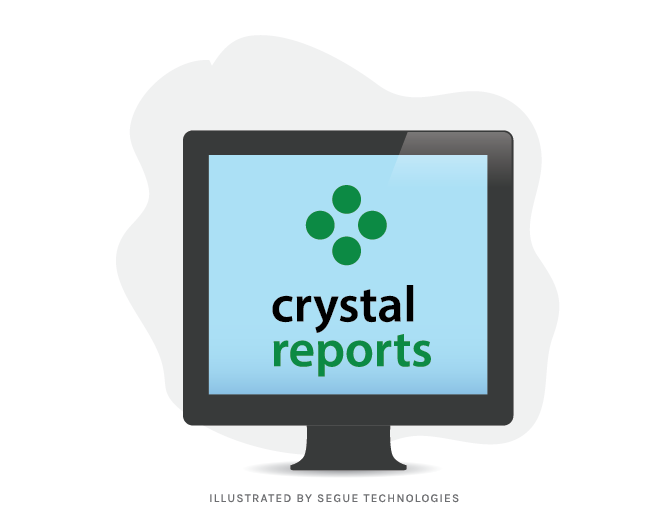Crystal Reports is a business intelligence application used to create custom reports from a variety of data sources. The package includes the major features needed for a business to create a database reporting environment, such as data access, report design/formatting, report viewing, and application integration. This allows the application to be enterprise-wide, available to users, and to support data reporting from report creation to upload and execution.
Crystal Reports Features
The main purpose of Crystal Reports is to allow users to pull their desired data from a data source, such as an Oracle or MS SQL Server database, and present the data in a repeatable and organized way. Crystal Reports provides you with a powerful, dynamic, and actionable reporting solution that helps you design, explore, visualize, and deliver reports via the web or embedded in enterprise applications.
Powerful report design
Report authors benefit from a complete set of layout and design controls to create highly formatted, interactive, and professional-looking reports. Use the standalone designer or the design tool integrated within Microsoft Visual Studio without leaving the development environment. Designers also have complete control of the report layout as well as many formatting options to display their data how they see fit in a custom and uniform way. Custom parameters can also be used in the reports to filter data by allowing users to enter values or choose from a pick list, providing more flexibility.
Flexible application development
Crystal Reports can also integrate the data from multiple databases so users are not constricted to using one data source or one database or database type (MySQL, Oracle, MS SQL Server, etc) in a report. Developers can leverage cross-platform support for both .NET and Java. HTML is generated directly by Crystal Reports, allowing developers to focus on application business logic, rather than tedious, time-intensive hand coding. Separation of application development and report design tasks allow developers to focus on application development, while the report authors can focus on report design. This provides flexibility, as many companies store their data in different places and on different systems.
Report management and delivery
Reports are previewed in HTML and published to the web for easy and controlled sharing – allowing for better business decisions at all levels of the organization. Reports can also be exported and repurposed in the most popular formats, such as PDF, Excel, and RTF. The IT group can centralize the management of operational reporting, while distributing the report authoring function to the lines of business.
Crystal Reports in Action
Here at Segue, we use Crystal Reports to aggregate and display data from Oracle databases for our National Park Service (NPS) contract. There are several different databases that house data, and thus many different types of reports that our users need. These reports are accessible to users via an online application based on Crystal Report’s Business Objects Enterprise. This enables our users to run the reports whenever they need them. This also provides easy maintenance, as all the reports are located in the same place and can be accessed within the program or online application. For example, at the NPS we use a custom website called AMRS that is integrated with Business Objects Enterprise, where reports are run and stored.
Currently, we are responsible for creating, designing, modifying, maintaining, and uploading the NPS reports. Crystal Report’s flexibility and features have helped us to navigate this process and successfully transform the data into information that our users can access. A reliable reporting system is critical for utilizing and presenting the data that you store and Crystal Reports has everything that you need.



